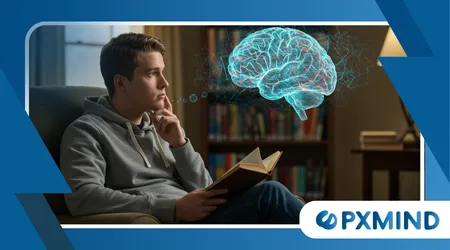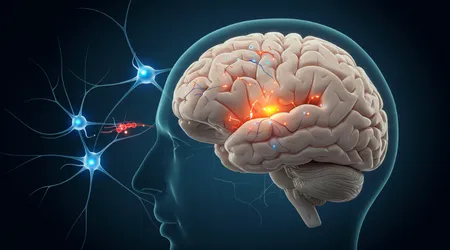How the Brain Learns: A Simple Guide

How the brain learns is a captivating puzzle, revealing the mind’s incredible ability to adapt, grow, and master new skills. This intricate process, driven by neural connections and shaped by experience, holds the key to personal growth and cognitive resilience.
Anúncios
Neuroscience continues to uncover how our brains absorb knowledge, offering insights that can transform education, professional development, and daily life.
In 2025, with advancements in brain imaging and cognitive research, we’re gaining a clearer picture of this dynamic mechanism.
This guide explores the science behind learning, practical strategies to enhance it, and real-world applications, all grounded in current, evidence-based findings. Ready to unlock the secrets of your mind?
Learning isn’t just about memorizing facts; it’s a symphony of biological and psychological processes. From neuroplasticity to emotional influences, how the brain learns involves multiple systems working in harmony.
This article breaks down the science into digestible parts, offering actionable insights and avoiding jargon-heavy explanations. Whether you’re a student, educator, or lifelong learner, understanding these principles can elevate your potential. Let’s dive into the fascinating world of brain-based learning.
The Science of Learning: How the Brain Adapts
The brain’s ability to learn hinges on neuroplasticity, its capacity to form and strengthen neural connections. When you learn something new, neurons fire, creating pathways that solidify with practice.
How the brain learns is dynamic connections weaken without use but thrive with repetition. A 2023 study in Nature Neuroscience found that consistent practice increases synaptic efficiency by 30%, boosting memory retention. This adaptability powers everything from mastering a language to playing an instrument.
++ How Exercise Boosts Your Brain Power, According to Science
Imagine your brain as a city, with neural pathways as roads. Learning builds new streets, and practice paves them for smoother travel. Neglected roads fade, but active ones flourish.
This analogy highlights why consistent effort matters. The brain prioritizes frequently used connections, making them faster and more efficient over time.
Curiosity also shapes learning. Dopamine, a neurotransmitter, surges when you’re intrigued, enhancing focus and retention. Engaging tasks, like solving a puzzle, trigger this reward system, making learning stick.
So, how can you harness this? Seek novelty try learning in varied settings or formats to keep your brain engaged.

The Role of Memory in Learning
Memory is the backbone of learning, storing and retrieving information as needed. How the brain learns relies on three memory stages: encoding, storage, and retrieval.
Encoding happens when you process new information, like reading this article. Storage consolidates it, and retrieval pulls it back when needed, like recalling a fact during a quiz.
Short-term memory holds information briefly, while long-term memory stores it indefinitely. Practice strengthens the transfer from short to long.
For example, reviewing notes within 24 hours can improve retention by 60%, per a 2024 Journal of Cognitive Science study. Spaced repetition, like revisiting material over days, further cements knowledge.
Also read: What Happens in Your Brain When You’re Afraid?
Emotion plays a huge role too. Ever wonder why you remember a heartfelt story but forget dry facts? Emotional events trigger the amygdala, enhancing memory consolidation. To leverage this, connect new information to personal experiences like linking a history lesson to a family story.
| Memory Stage | Description | Example | Key Strategy |
|---|---|---|---|
| Encoding | Processing new info | Reading a book | Focus without distractions |
| Storage | Consolidating info | Reviewing notes | Use spaced repetition |
| Retrieval | Recalling info | Answering a quiz | Practice active recall |
The Impact of Environment and Habits
Your surroundings shape how the brain learns. A cluttered space or constant notifications disrupt focus, weakening neural connections.
A 2024 study from Stanford showed that a tidy environment boosts cognitive performance by 15%. Create a dedicated learning space simple, quiet, and free of distractions to optimize focus.
Habits also matter. Sleep, for instance, is non-negotiable. During sleep, the brain replays learned material, strengthening synapses. Adults who get 7-8 hours of sleep retain 20% more information than those sleeping less, per recent sleep research. Prioritize rest to supercharge your learning.
Read more: The Role of Sleep in Brain Health and Memory
Nutrition and exercise are equally critical. Omega-3 fatty acids, found in fish, enhance cognitive function, while aerobic exercise increases hippocampal volume, aiding memory.
Picture your brain as a garden: good habits like sleep, diet, and exercise are water and sunlight, nurturing growth.
Emotional and Social Influences on Learning
Emotions drive how the brain learns, acting as a gatekeeper for attention and retention. Stress, for example, floods the brain with cortisol, impairing memory.
A 2025 meta-analysis in Frontiers in Psychology noted that chronic stress reduces learning efficiency by 25%. Manage stress through mindfulness or deep breathing to keep your brain primed.
Social connections also boost learning. Collaborative environments, like study groups, enhance understanding through discussion and diverse perspectives.
Teaching others solidifies your own knowledge try explaining a concept to a friend to test your grasp. Social learning activates reward centers, making it stickier.
Motivation is another key player. Intrinsic motivation, like a passion for art, fuels deeper engagement than external rewards.
For example, a student learning guitar because they love music will practice more than one chasing a grade. Find your “why” to sustain effort.
Practical Strategies to Enhance Learning
Want to optimize how the brain learns? Start with active recall testing yourself instead of passively rereading. This strengthens neural pathways, improving retention. For example, use flashcards to quiz yourself on vocabulary, reinforcing memory through effortful retrieval.
Chunking is another powerful tool. Break complex information into smaller bits, like grouping historical dates by era.
This reduces cognitive overload, making learning manageable. A student preparing for a biology exam might organize terms into categories like “cell types” or “functions.”
Interleaving, or mixing topics during study, also boosts retention. Instead of studying math for hours, alternate between math, history, and science.
This challenges the brain, strengthening connections. A 2024 study found interleaving improves long-term recall by 35% compared to blocked practice.
Technology and Learning in 2025
In 2025, technology is reshaping how the brain learns. Apps like spaced repetition tools (e.g., Anki) leverage cognitive science to optimize memory.
Virtual reality immerses learners in simulations, like exploring a digital brain to study neuroscience, enhancing engagement and retention.
AI-driven platforms personalize learning. Adaptive algorithms adjust content based on your progress, ensuring optimal challenge levels.
For instance, a language app might introduce harder words as you improve, keeping you in the “flow” zone. Technology amplifies learning but requires discipline to avoid distractions.
Wearable devices, like neurofeedback headbands, are gaining traction. These monitor brain activity, helping users optimize focus during study.
A 2025 trial in Journal of Neurotechnology reported a 12% improvement in learning outcomes with neurofeedback. Embrace tech, but balance it with traditional methods.
Overcoming Common Learning Barriers
Distraction is a major hurdle in how the brain learns. Smartphones, with their endless notifications, fragment attention.
Try the Pomodoro technique: 25 minutes of focused work, then a 5-minute break. This trains your brain to stay on task, boosting productivity.
Procrastination is another foe. It stems from fear of failure or overwhelm. Break tasks into small steps like writing one paragraph instead of an entire essay.
This builds momentum. Reward yourself after completing steps, like enjoying a coffee, to reinforce positive habits.
Lack of confidence can also stall learning. Embrace a growth mindset: view challenges as opportunities, not failures. For example, a programmer struggling with code should see errors as learning moments. This mindset, backed by decades of research, fosters resilience and progress.
The Future of Learning: What’s Next?

As we advance, how the brain learns will evolve with neuroscience and technology. Brain-computer interfaces, like Neuralink, are in early stages, potentially enhancing memory or skill acquisition.
Ethical concerns remain, but the potential is staggering imagine downloading a language directly to your brain.
Personalized education is also rising. AI will tailor curricula to individual learning styles, maximizing efficiency.
Schools are already piloting such systems, with early data showing improved student outcomes. The future promises learning that’s faster, deeper, and more accessible.
Community-driven learning is another trend. Platforms like X foster knowledge-sharing through real-time discussions.
Engaging with diverse perspectives online can spark curiosity and deepen understanding. What will your role be in this learning revolution? Stay curious, and the possibilities are endless.
Conclusion: Empowering Your Brain’s Potential
Understanding how the brain learns unlocks a world of possibilities. By leveraging neuroplasticity, optimizing environments, and embracing technology, you can transform how you acquire knowledge.
From managing stress to using active recall, small changes yield big results. The brain is not fixed it’s a dynamic, adaptable organ eager to grow. In 2025, with neuroscience advancing rapidly, there’s no better time to harness these insights.
Take charge of your learning journey, experiment with strategies, and watch your potential soar. The question isn’t whether you can learn it’s how far you’ll go.
Frequently Asked Questions
Q: How long does it take to learn a new skill?
A: It varies, but the “10,000-hour rule” is outdated. Deliberate practice over months, like practicing piano 20 hours weekly, can yield proficiency.
Q: Can anyone improve their learning ability?
A: Yes! Neuroplasticity ensures everyone can enhance learning with consistent effort, proper strategies, and a growth mindset, regardless of age or background.
Q: Does multitasking harm learning?
A: Absolutely. Multitasking splits attention, reducing retention. Focus on one task, like studying without checking your phone, for better results.
Q: How does stress affect learning?
A: Chronic stress impairs memory and focus, reducing learning efficiency by up to 25%. Mindfulness or exercise can mitigate its effects.
Q: Are there foods that boost learning?
A: Yes, omega-3-rich foods like salmon and walnuts support cognitive function. A balanced diet with hydration enhances brain performance.
